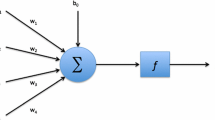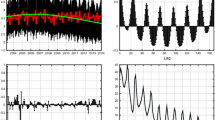Abstract
In electrical load forecasting the prediction of the demand during holidays is a challenging task because of the drift of the demand profile with respect to normal working days. Among holidays, the Easter Week is peculiar because it is a moving holiday: though the weekdays are always the same, it may fall anywhere between March and April. The main contribution of this work is to develop a short-term day-ahead predictor for the load demand during the Easter Week using the Italian data as benchmark. The proposed strategy uses a Gaussian Process (GP) estimator to track the difference between the target Easter Week and an average Easter Week load profile. Differently from usual GP approaches that employ ‘canonical’ kernels, we propose and validate the use of a tailored kernel based on the nonstationary autocovariance of the time series, whose estimation is made possible by the availability of historical load series starting from 1990. On the Italian data the novel approach outperforms both GP methods based on canonical kernels and the forecasts provided by the Italian Transmission System Operator (TSO) Terna. The scarce correlation between the prediction residuals of the novel technique and those of the Terna forecaster motivated the use of aggregation strategies that yielded a further improvement. Indeed, all the main error indexes exhibit a decrease in several tens percent over Terna. The proposed approach is of general validity if, thanks to the availability of historical datasets, the kernel can be tailored to the statistical properties of the time series.















Similar content being viewed by others
Code availability
Custom code written in Python.
Data availability
The dataset considered in this work was downloaded from www.terna.it/en/electric-system/transparency-report.
References
Ramos S, Soares J, Vale Z (2013) Short-term load forecasting based on load profiling. IEEE Power Energy Soc Gener Meet. https://doi.org/10.1109/PESMG.2013.6672439
Mbamalu G.A., El-Hawary M.E. (1993) Load forecasting via suboptimal seasonal autoregressive models and iteratively reweighted least squares estimation, IEEE Transactions on Power Systems (Institute of Electrical and Electronics Engineers); (United States) . 10.1109/59.221222
Chen JF, Wang WM, Huang CM (1995) Analysis of an adaptive time-series autoregressive moving-average (ARMA) model for short-term load forecasting. Electr Power Syst Res. https://doi.org/10.1016/0378-7796(95)00977-1
Huang SR (1997) Short-term load forecasting using threshold autoregressive models. IEE Proc-Gen , Transm Distrib 144(5):477
Srinivasan D, Lee M.A. (1995) Survey of hybrid fuzzy neural approaches to electric load forecasting, In: 1995 IEEE International Conference on Systems, Man and Cybernetics. Intelligent Systems for the 21st Century, vol. 5 , vol. 5
Khuntia SR, Rueda JL, van der Meijden MA (2016) Forecasting the load of electrical power systems in mid- and long-term horizons: a review. IET Gen , Transm & Distrib 10:3971
Ghods L, Kalantar M (2011) Different methods of long-term electric load demand forecasting a comprehensive review. Iran J Electr Electron Eng 7:249–259
Hong T, Fan S (2016) Probabilistic electric load forecasting: a tutorial review. Int J Forecast 32(3):914
Gooijer JGD, Hyndman RJ (2006) 25 years of time series forecasting. Int J Forecastng 22:443–473
Martínez-Álvarez F, Troncoso A, Asencio-Cortés G, Riquelme JC (2015) A survey on data mining techniques applied to electricity-related time series forecasting. Energies 8:13162–13193
Hahn H, Meyer-Nieberg S, Pickl S (2009) Electric load forecasting methods: tools for decision making. Eur J Oper Res 199:902–907
Box G, Jenkins G.M. (1976) Time Series Analysis: Forecasting and Control (Holden-Day, 1976)
Wallis F, Bede, (1999) Bede, the Reckoning of Time (Translated Texts for Historians; V. 29) (Liverpool University Press, 1999)
Vu D, Muttaqi K, Agalgaonkar A, Bouzerdoum A (2017) Short-term electricity demand forecasting using autoregressive based time varying model incorporating representative data adjustment. Appl Energy 205:790. https://doi.org/10.1016/j.apenergy.2017.08.135
Nicolao G, Pozzi M, Soda E, Stori M (2014) Short-term load forecasting: A power-regression approach, 2014 International Conference on Probabilistic Methods Applied to Power Systems, PMAPS 2014 - Conference Proceedings . 10.1109/PMAPS.2014.6960648
Guerini A, Nicolao G.D., (2016) Long- and short-term electric load forecasting on quarter-hour data: A 3-torus approach, In: 2016 IEEE 16th International Conference on Environment and Electrical Engineering (EEEIC)
Chicco G, Napoli R, Piglione F (2001) Load pattern clustering for short-term load forecasting of anomalous days, In: 2001 IEEE Porto Power Tech Proceedings (Cat. No.01EX502), vol. 2 , vol. 2, pp. 6 pp. vol.2–. 10.1109/PTC.2001.964745
Marin FJ, Garcia-Lagos F, Joya G, Sandoval F (2002) Global model for short-term load forecasting using artificial neural networks. IEE Proc - Gen, Transm Distrib 149(2):121. https://doi.org/10.1049/ip-gtd:20020224
https://www.terna.it/it/sistema-elettrico/transparency-report/total-load. Accessed: 2020-04-30
Nowicka-Zagrajek J, Weron R (2002) Modeling electricity loads in California: ARMA models with hyperbolic noise. Signal Process 82(12):1903. https://doi.org/10.1016/S0165-1684(02)00318-3
Incremona A, De Nicolao G (2019) Spectral characterization of the multi-seasonal component of the Italian electric load: a LASSO-FFT approach. IEEE Control Syst Lett. https://doi.org/10.1109/LCSYS.2019.2922192
Guerini A, Nicolao G.D. (2015) Long-term electric load forecasting: A torus-based approach, In: 2015 European Control Conference (ECC)
Rasmussen C.E. (2004) Gaussian processes in machine learning, In: Advanced lectures on machine learning (Springer, 2004), pp. 63–71
Nowotarski J, Liu B, Weron R, Hong T (2016) Improving short term load forecast accuracy via combining sister forecasts. Energy 98:40. https://doi.org/10.1016/j.energy.2015.12.142
Wallis KF (2011) Combining forecasts - forty years later. Appl Financ Econ 21(1–2):33. https://doi.org/10.1080/09603107.2011.523179
Ranjan R, Gneiting T (2010) Combining probability forecasts. J Royal Stat Soc Ser B 72:71. https://doi.org/10.2307/40541575
Devaine M, Gaillard P, Goude Y, Stoltz G (2013) Forecasting electricity consumption by aggregating specialized experts. Mach Learn 90(2):231. https://doi.org/10.1007/s10994-012-5314-7
Funding
This work has been partially supported by the Italian Ministry for Research in the framework of the 2017 Program for Research Projects of National Interest (PRIN), Grant no. 2017YKXYXJ.
Author information
Authors and Affiliations
Corresponding author
Ethics declarations
Conflicts of interest
The authors declare that they have no conflict of interest.
Additional information
Publisher's Note
Springer Nature remains neutral with regard to jurisdictional claims in published maps and institutional affiliations.
Rights and permissions
About this article
Cite this article
Incremona, A., De Nicolao, G. Short-term forecasting of the Italian load demand during the Easter Week. Neural Comput & Applic 34, 6257–6271 (2022). https://doi.org/10.1007/s00521-021-06797-8
Received:
Accepted:
Published:
Issue Date:
DOI: https://doi.org/10.1007/s00521-021-06797-8




